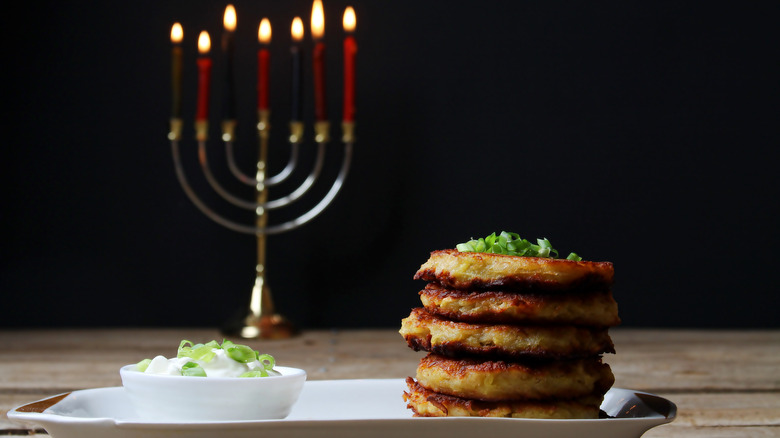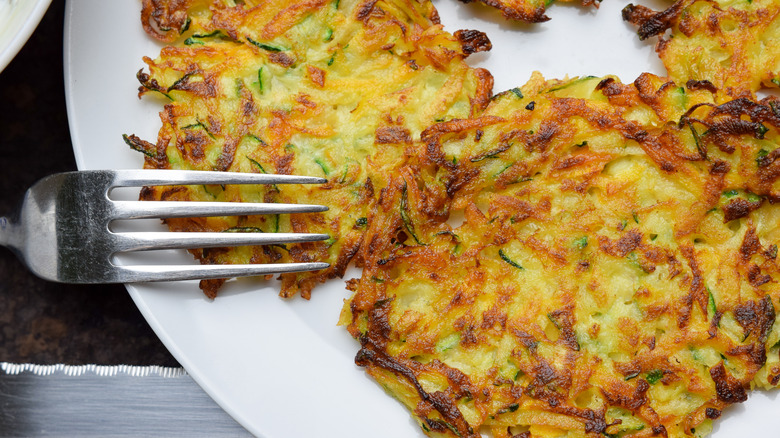One Simple Reason Your Latkes Turned Out To Be A Soggy Mess
They're golden and crispy on the outside, and tender and creamy on the inside. They're the perfect dish to pair with a dollop of sour cream or applesauce. Hanukkah might be incomplete without a heaping plate of these crackly Eastern European fried potato pancakes. Latkes, one of the most well-known foods from Ashkenazi Jewish cuisine, can be enjoyed year-round, but eating them for Hanukkah commemorates a sacred event in Jewish history. After the leaders of a Jewish rebel army called the Maccabees rose up against their Greek-Syrian oppressors in the Maccabean Revolt of 167 BC, the Maccabees sought to renew hope and energy by rededicating the Second Temple in Jerusalem, which had been desecrated during the struggle. They could find only enough sacred oil to keep the candelabrum in the temple alight for a single night, but according to legend, the candles remained lit for eight days (via The Telegraph).
To celebrate the eight days of Hanukkah, Jewish people eat fried foods like latkes, apple fritters, and sufganiyot, or jelly donuts (via Kosher). Latkes are a dish that has survived generations of war, famine, and depression. Traditionally made with shredded potatoes, they could also be fashioned from any starchy veggie latke alternative, such as sweet potato, zucchini, and beets, according to the Jerusalem Post. No matter what vegetables you use, one of the core principles of cooking a perfect latke is keeping them crispy.
Avoid overcrowding the latkes to keep them crispy
There are several big latke mistakes you could be making when frying them up. Maybe you've used olive oil, a common tasty choice with a low smoking point. If you don't have any duck or chicken fat lying around, try canola or peanut oil instead, according to My Recipes. Maybe you didn't prep the potatoes carefully, making sure to wring out just enough of the potatoes' starchy liquid to keep the latkes creamy and crispy (via My Jewish Learning).
Or maybe you're overcrowding your latkes on the pan when you cook them. Layering the latkes can pose one of the most significant challenges to achieving an exquisitely crunchy, golden-brown crisp. Instead of squeezing all of the latkes into a smaller pan, Food Network suggests using a large pan to make sure that the latkes aren't overlapping while they cook, which would cause them to steam rather than crisp up. It may take longer to cook all of the delicious potato cakes from your traditional latke recipe, but it's worth the wait once you've fried up a beautiful golden batch.

